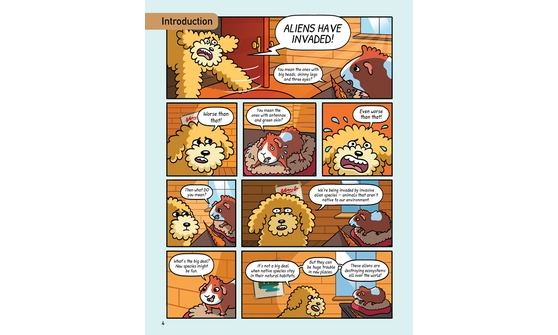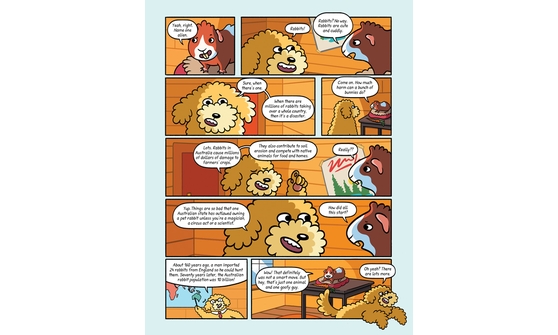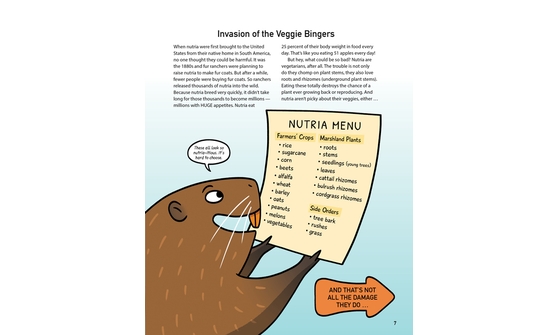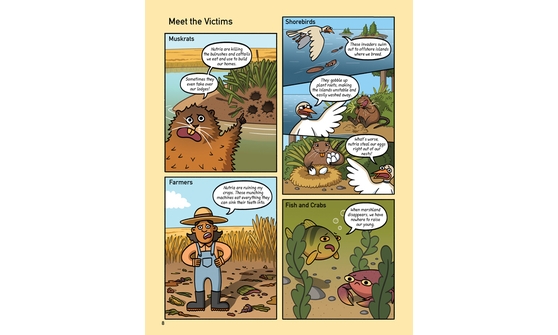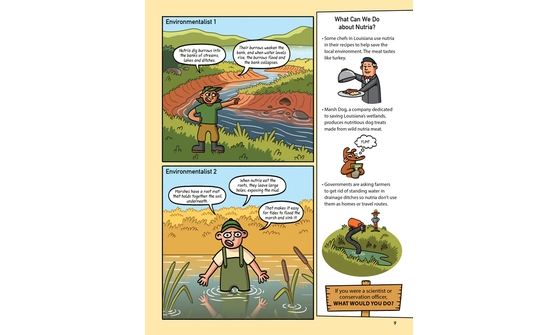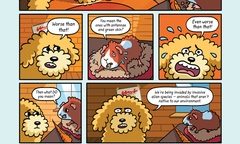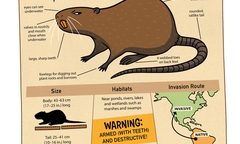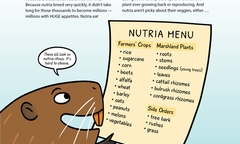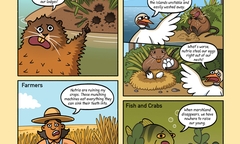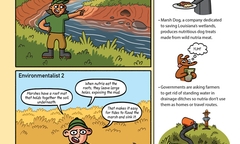Beware the Burmese Pythons
and Other Invasive Animal Species
(Ages 8-12)
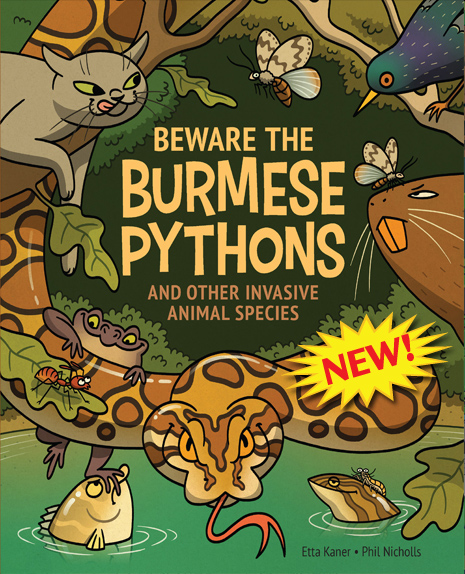
Click the images below to enlarge
About the Book
A kid-friendly introduction to invasive animal species that explores how they got into new ecosystems and the damage they’ve caused.
It might not seem like a big deal when a non-native animal species finds its way to another environment. But it can be! Invasive species reproduce quickly and often have no natural predators, allowing them to overtake native species, and even destroy the ecosystem of their new home. Here’s an intriguing look at 10 of these species from around the world – from tiny cactus moths to mighty Burmese pythons – and the problems they’re causing. As each section explains, humans were responsible for bringing all these animals to their new locations. And now it’s up to humans to do something about it!
In this unique, highly visual book, Etta Kaner’s accessible text and Phil Nicholls’s vibrant art reveal a fascinating world of “aliens” that invade new habitats. With two spreads for each animal, the book is chock-full of information, including the animal’s features, habitat and invasion route; a narrative describing how it became invasive and why it’s become a problem; and a list of ideas for what can be done, ending with the question, “If you were a scientist or conservation officer, what would you do?” The text is presented in fun, eye-catching formats, ranging from comic strips to posters to newspaper articles, keeping the engagement level high and highlighting what scientists are currently doing to solve the problems. There are strong life-science connections here on characteristics of living things, ecosystems and habitats. Contains a glossary, sources, further reading and how to help.
People often ask me where I get my ideas. Sometimes I’m able to pinpoint the exact source. In this case, the source may have come from a trip to New Orleans which my husband and I took many years ago. We visited a museum that featured a display of invasive species – both plants and animals. I was fascinated by an animal that I’d never heard of before – nutria. Imagine my excitement when later that day we actually saw a nutria swimming in a local waterway. It must have made an impression on me because many years later I wrote this book and of course included nutria in it.
Reviews
"There are strong life-science connections here on characteristics of living things, ecosystems, and habitats."
— CBC Books
"… the information is fascinating and is presented in an appealing, kid-friendly format.”
— Barb Rehmeyer, Liberty Library (5 stars)
"Non-fiction with interesting, lesser known facts is always a treat, but slide in a bit of graphic novel atmosphere, and this one is a definite winner."
— Bookworm for Kids
"A strong pick for fans of the popular Science Comics series."
— Booklist Online
AVAILABLE AT:

About the Book
A kid-friendly introduction to invasive animal species that explores how they got into new ecosystems and the damage they’ve caused.
It might not seem like a big deal when a non-native animal species finds its way to another environment. But it can be! Invasive species reproduce quickly and often have no natural predators, allowing them to overtake native species, and even destroy the ecosystem of their new home. Here’s an intriguing look at 10 of these species from around the world – from tiny cactus moths to mighty Burmese pythons – and the problems they’re causing. As each section explains, humans were responsible for bringing all these animals to their new locations. And now it’s up to humans to do something about it!
In this unique, highly visual book, Etta Kaner’s accessible text and Phil Nicholls’s vibrant art reveal a fascinating world of “aliens” that invade new habitats. With two spreads for each animal, the book is chock-full of information, including the animal’s features, habitat and invasion route; a narrative describing how it became invasive and why it’s become a problem; and a list of ideas for what can be done, ending with the question, “If you were a scientist or conservation officer, what would you do?” The text is presented in fun, eye-catching formats, ranging from comic strips to posters to newspaper articles, keeping the engagement level high and highlighting what scientists are currently doing to solve the problems. There are strong life-science connections here on characteristics of living things, ecosystems and habitats. Contains a glossary, sources, further reading and how to help.
REVIEWS:
"There are strong life-science connections here on characteristics of living things, ecosystems, and habitats."
— CBC Books
"… the information is fascinating and is presented in an appealing, kid-friendly format.”
— Barb Rehmeyer, Liberty Library (5 stars)
"Non-fiction with interesting, lesser known facts is always a treat, but slide in a bit of graphic novel atmosphere, and this one is a definite winner."
— Bookworm for Kids
"A strong pick for fans of the popular Science Comics series."
— Booklist Online
AVAILABLE AT:
